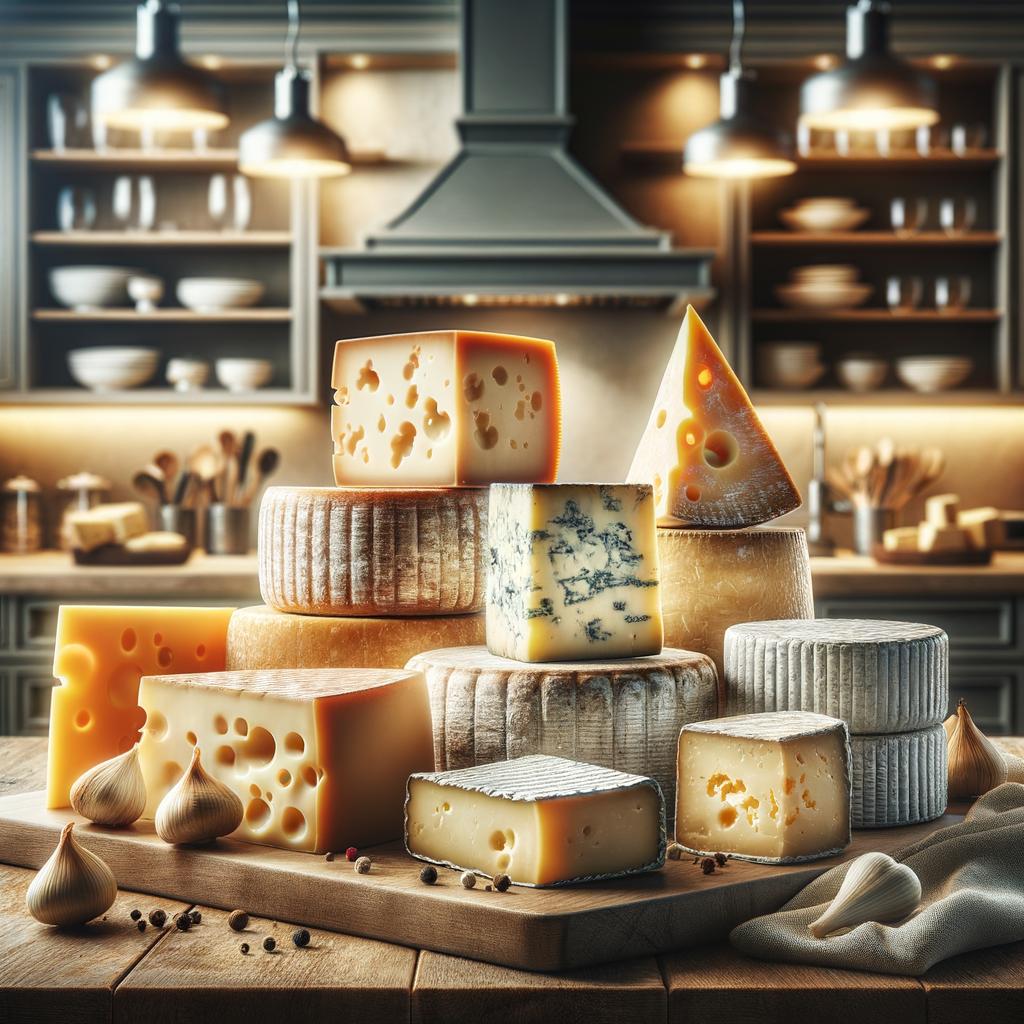Aged Cheeses

Description
Aged cheeses, also known as mature cheeses, are a delightful gastronomic treasure that tantalizes the taste buds with their rich, complex flavors. They come in a myriad of forms, from the crumbly, tangy Cheddar to the hard, nutty Parmigiano-Reggiano, each with their unique texture, color, and aroma. The aging process imparts a depth of flavor that is both sharp and savory, often featuring notes of nuttiness, caramel, and even fruit. The exterior of these cheeses may vary from smooth and glossy to rugged and crusty, while the interior can range from firm and granular to creamy and smooth. What sets aged cheeses apart is their prolonged maturation period, which allows them to develop a concentrated, multi-layered flavor profile that is both robust and refined.
Primary Uses
Aged cheeses are a versatile ingredient that can be used in an array of culinary applications. They are often grated over pasta and risotto, baked into quiches and tarts, or simply savored as is with a glass of wine. They are a key component in many European cuisines, particularly in Italian, French, and Swiss dishes. Beyond the culinary world, aged cheeses are also valued for their cultural significance. They are a staple in festive celebrations and are often gifted during special occasions. Some aged cheeses are even used in traditional medicines for their supposed digestive benefits.
History
The art of cheese aging dates back thousands of years, with evidence of cheese-making found in ancient Egyptian tombs and Greek historical texts. The process of aging was initially a means of preservation, allowing cheese to be stored for extended periods without refrigeration. Over time, it was discovered that this maturation process also enhanced the flavor of the cheese, leading to the development of the varied aged cheeses we enjoy today. There are countless stories and legends associated with these cheeses. For instance, the discovery of Roquefort, a blue-veined aged cheese, is said to be the result of a shepherd who, distracted by a beautiful maiden, left his lunch of bread and cheese in a cave, only to return months later to find it transformed into the first Roquefort cheese.
Nutritional Information
Aged cheeses are a fantastic source of high-quality protein, calcium, and phosphorus, which are essential for bone health. They also provide a good amount of vitamin B12, which is crucial for nerve function and the production of red blood cells. Due to the aging process, they are typically lower in lactose, making them a suitable option for those with lactose intolerance. However, they are also high in saturated fats and sodium, which should be considered for those with specific dietary needs. Compared to fresh cheeses, aged cheeses often have a higher nutritional density, meaning they provide more nutrients per serving, thanks to the concentration effect of the aging process. As with any food, moderation is key to enjoying the rich flavors and nutritional benefits of aged cheeses.

